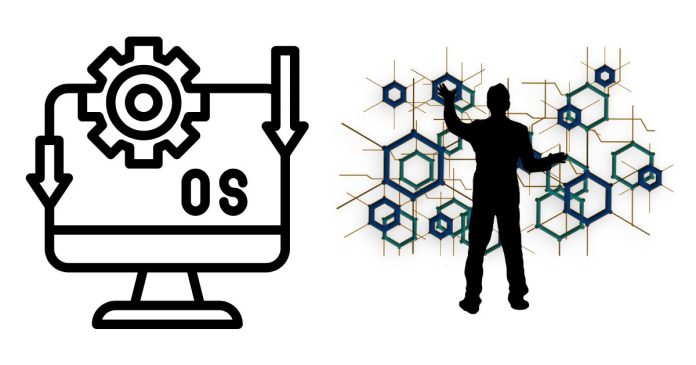An Operating System (OS) is the core software that manages computer hardware and software resources while providing essential services for computer programs. It acts as an interface between the user and the hardware. Here are the primary functions of an operating system:
1. Process Management
The OS is responsible for managing processes in a computer system, ensuring they are executed efficiently. Key tasks include:
- Process Scheduling: Allocating CPU time to processes using scheduling algorithms (e.g., FCFS, Round Robin, etc.).
- Multitasking: Allowing multiple processes to run simultaneously.
- Process Synchronization: Coordinating processes that share resources to avoid conflicts.
- Process Creation and Termination: Creating new processes and terminating completed ones.
2. Memory Management
The OS manages the computer’s memory, ensuring efficient allocation and deallocation of memory resources. This includes:
- Memory Allocation: Assigning memory to processes and freeing it when no longer needed.
- Virtual Memory: Extending physical memory by using disk space as additional memory.
- Memory Protection: Preventing one process from accessing the memory of another.
3. File System Management
The OS manages files on storage devices and provides services such as:
- File Creation and Deletion: Allowing users and applications to create, modify, and delete files.
- Directory Management: Organizing files in a hierarchical structure for easy navigation.
- File Access Control: Implementing permissions to ensure data security.
4. Device Management
The OS manages hardware devices and acts as an intermediary between applications and hardware. Key tasks include:
- Device Drivers: Providing the necessary interface for the OS to communicate with hardware devices.
- Device Scheduling: Allocating hardware resources like printers, disks, etc., among processes.
- Buffering and Spooling: Managing data transfers between hardware devices and memory.
5. Security and Protection
The OS ensures the security of data and resources by implementing:
- User Authentication: Validating user credentials before granting access.
- Access Control: Restricting unauthorized access to files, processes, or devices.
- Data Encryption: Protecting sensitive data from unauthorized access or interception.
6. Resource Allocation
The OS allocates resources like CPU, memory, and I/O devices among users and processes. It ensures:
- Fair Resource Allocation: Distributing resources efficiently among processes.
- Deadlock Prevention: Avoiding situations where processes are stuck waiting for each other’s resources.
7. User Interface
The OS provides a user interface to interact with the system, which can be:
- Command-Line Interface (CLI): Text-based interface (e.g., Linux Terminal).
- Graphical User Interface (GUI): Visual interface with windows, icons, and menus (e.g., Windows, macOS).
8. I/O Management
The OS handles input and output operations between the user, applications, and hardware devices. This includes:
- Buffering: Temporarily storing data during transfer.
- Error Handling: Managing errors during I/O operations.
9. Networking
Modern operating systems support networking, allowing devices to communicate over a network. Functions include:
- Data Transmission: Managing communication between devices over LAN, WAN, or the internet.
- Protocols: Supporting communication protocols like TCP/IP.
10. Error Detection and Handling
The OS monitors the system for errors and ensures smooth functioning by:
- Error Detection: Identifying hardware or software malfunctions.
- Error Recovery: Taking corrective actions to resolve issues.
11. System Performance Monitoring
The OS tracks system performance and provides tools for:
- Resource Usage Monitoring: Tracking CPU, memory, and disk usage.
- Diagnostics: Providing insights into system health and performance.
12. Job Scheduling
For batch processing systems, the OS manages jobs in the queue, determining their execution order to maximize efficiency.
Summary
The operating system is a crucial component of a computer, managing hardware resources and providing essential services for applications. Its key functions ensure the system operates efficiently, securely, and reliably while offering a user-friendly interface.


